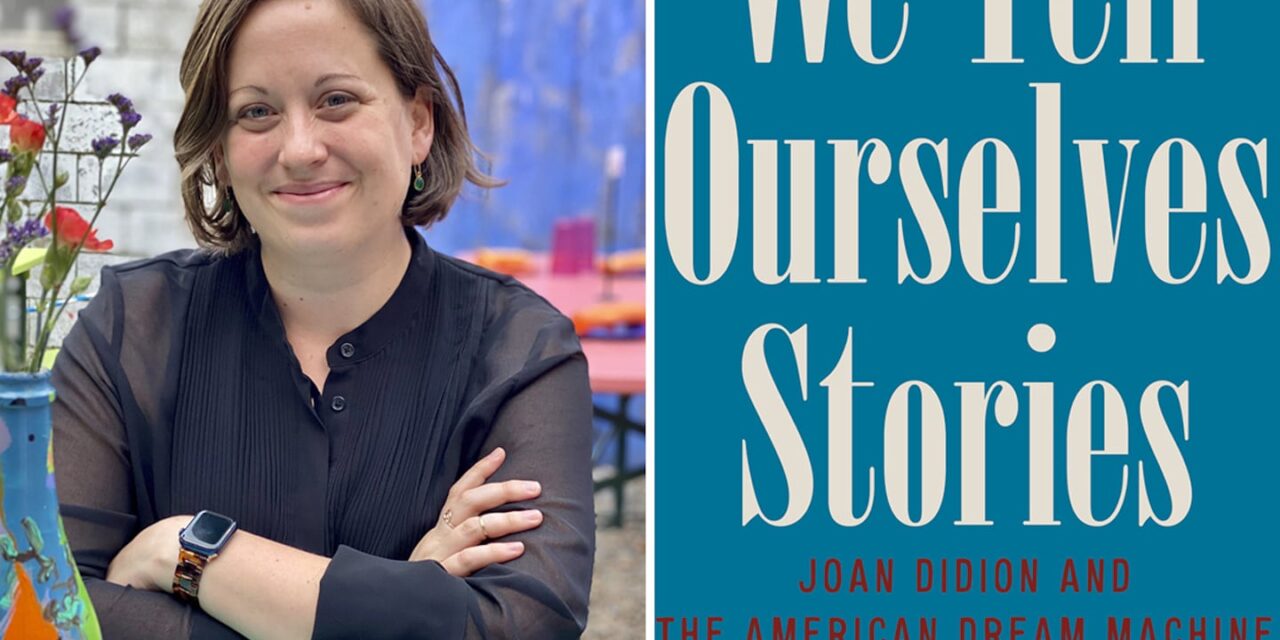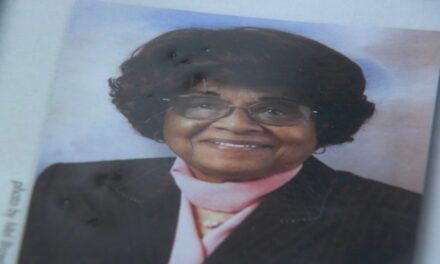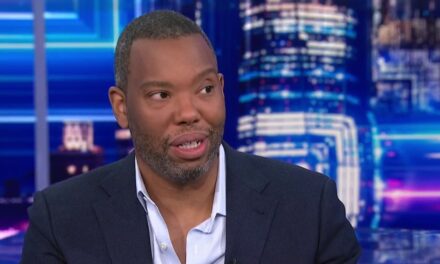
Early in the book, Wilkinson argues that “the way [Didion] understood the world, marked and inflected by the movies, is a useful lens to explain the reality we live in now. Everything she wrote about, from the feeling of observing reality from the outside — what else are we doing when we watch actors, many times larger than life, blemish-free and beautiful on the flatness of the screen — to the notion that politics and Hollywood are more similar than different, speaks to the great trajectory of her work.”
Get Starting Point
A guide through the most important stories of the morning, delivered Monday through Friday.
In the forward to Didion’s book of travel diaries, “South and West”(2017), Nathaniel Rich argues that the entries recording her 1970 sojourn in New Orleans and travel across the Deep South, capture insights that “eerily” anticipate the “Hollywoodized political scene” we are currently living through. Wilkinson unfolds Rich’s compact claim and fashions a narrative about California, John Wayne, the Hollywood studio system, Didion’s novels, her film reviews, and her personal and political nonfiction, especially the canonical essay, “The White Album,” whose opening sentence has inspired Wilkinson’s title.
Employing a fragmented, episodic structure, toggling between and sometimes blending reportorial and personal points of view, the titular essay (first published in 1979 in New West, the Pacific Coast sibling magazine to New York Magazine) in Didion’s collection “The White Album” recalls Southern California in the late 1960s as a reflection of the national state of discombobulation and a parallel for her own psychological breakdown.
Wilkinson argues that the essay’s famous opening line — “We tell ourselves stories in order to live” — is not “the inspirational phrase it’s sometimes taken to be.” Rather it’s Didion’s “diagnosis of humanity’s most reflexive survival tactic. It is Didion’s key to making sense of the world. Though the line is often treated as an aphorism, Didion means it more as an opening parry, the rising curtain on her best attempt to make sense of her muddled memories.”
Didion first noticed the culture’s rent seams in the early 1960s when she and her husband, John Gregory Dunne, quit their magazine jobs in New York City and moved to Didion’s home state, California, to write screenplays for the movie industry. In Los Angeles, they co-wrote film treatments and “doctored” other scripts, and even shared a magazine column, to financially underwrite their novel writing.
Perhaps in all her writing guises, Didion’s male lead and cultural barometer is John Wayne, both the character and the man. Wayne encapsulated “what postwar white America imagined itself to be: brave, ever on the move, unafraid to punch back when necessary. A beacon of goodness on a choppy horizon,” Wilkinson writes. However, in her 1965 Saturday Evening Post profile, “John Wayne: A Love Song,” confronted with the man’s cancer diagnosis, Didion “betrays a sense of unease” about the maintenance of his symbolic vitality. Among the essays collected in her first nonfiction book, “Slouching Towards Bethlehem” (1968), the Wayne piece signals Didion’s first notation of the culture’s disintegration.
Though Wilkinson’s insightful and generous study offers a way of reading the overlapping and contradictory desires that inform Didion’s writing in her differing modes and across her various career stages, there is a critical absence in “We Tell Ourselves Stories”that gave me some unease of my own.
With the exception of a riff on the differences between Didion’s film criticism and Pauline Kael’s, Wilkinson fails to put Didion in conversation with her literary contemporaries or agemates. This worrisome choice portrays Didion as though she were alone in critiquing American social mythologies on screen and in politics. Without contextualizing Didion’s work within a wide-ranging critical history, Wilkinson, perhaps inadvertently, reifies the Didion myth, as writer and celebrity. Given the political and cultural conditions of the US nation-state in 2025, we ought to eschew those narratives that present white artists existing in an “unpeopled” cultural landscape.
Wilkinson’s suggests that we recognize Didion as an American “everywoman” “who became a celebrity because she told things as she saw them, but never quite settled on one interpretation, on ‘fixed ideas.’” Could Didion have been the only writer to see things as they were? Likely not. Such claims erase, for example, Audre Lorde’s powerful cultural criticism and the vision of the West that N. Scott Momaday advances in his prizewinning novel, “House Made of Dawn” (1968), by two of Didion’s contemporaries.
Wilkinson could’ve placed Didion, who titled an early essay “Notes of a Native Daughter,” in a fruitful exchange with James Baldwin. Debating William F. Buckley (Didion’s editor at The National Review) on the American dream and Black American citizenship at the University of Cambridge in 1965, Baldwin argued that Hollywood Westerns express national genocidal desires: “It comes as a great shock around the age of five or six or seven, to discover that Gary Cooper killing off the Indians, when you were rooting for Gary Cooper, that the Indians were you. It comes as a great shock to discover the country . . . has not, in its whole system of reality, evolved any place for you [the racialized other].”
For his 1971 memoir, “No Name in the Street,” Baldwin developed a manic but precise narrative form (mirroring both America’s murderous rejection of the 60s civil rights movement and his own broken psychological state following that decade) that seems a foreshadowing of Didion’s architectural choices in “The White Album.” While white Americans remain secure in the euphoria of their mythologies, Baldwin explains, “black people have not been so lucky: a black man who sees the world the way John Wayne, for example, sees it would not be an eccentric patriot, but a raving maniac.” And “The Devil Finds Work” (1975), Baldwin’s book-length critical essay on movies, documents the nation’s failure to disentangle itself from dangerous cinematic mythologies about masculinity, whiteness, and American imperial power, seems like a perfect sparring partner for Didion’s screenwriting.
Wilkinson could’ve tested her analyses against the trenchant cultural criticism in Elaine Castillo’s essay collection, “How to Read Now” (2022). In her daring, fiery essay, “Main Character Syndrome,” Castillo rejects what she calls the “Didion psalms” — those lines of Didion’s that gain sacred literary status, see Wilkinson’s title — deflates the Didion mythos, reclaims California, and forwards an liberated, Indigenous (and Filipino-American) West. “
“We Tell Ourselves Stories” details how American political culture has become enmeshed with “reality” television, the new mythology, from televised national political conventions, to C-SPAN to The Apprentice. According to Wilkinson, “there’s no better guide through this era than Didion.”
We’ve entered an era that demands we write, publish, and tell rich, capacious, desegregated, comparative cultural histories and literary studies for general audiences in order to reject those political myths that purposely or inadvertently promote visions of white-only American experience and history. Our lives now depend on creating a mature, inclusive, and visionary national culture and politics that refuses Hollywood game show dreams. “We Tell Ourselves Stories”will be useful in preparing for that cultural remaking.
WE TELL OURSELVES STORIES: Joan Didion and the American Dream Machine
By Alissa Wilkinson
Liveright, 272 pages, $29.99
Walton Muyumba teaches literature at Indiana University-Bloomington. He is the author of “The Shadow and the Act: Black Intellectual Practice, Jazz Improvisation, and Philosophical Pragmatism.”



